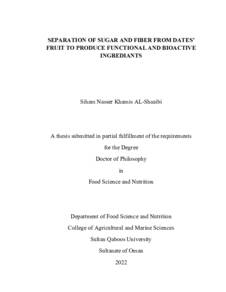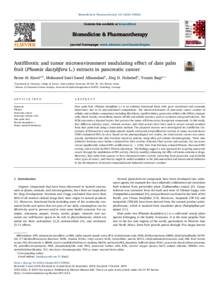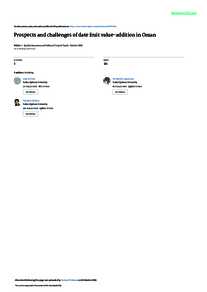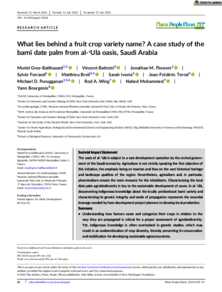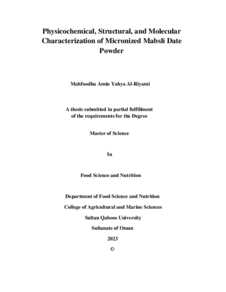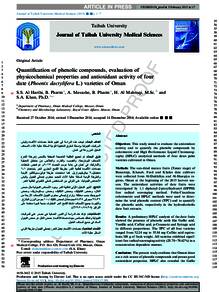Document
Separation of sugar and fiber from dates' fruit to produce functional and bioactive ingredients.
Other titles
فصل السكر والألیاف عن ثمار التمر لإنتاج مكونات وظیفیة ونشطة بیولوجیاً
Publisher
Sultan Qaboos University.
Gregorian
2022
Language
English
English abstract
There are many challenges regarding food sustainability in the world, and the
most important challenge is the excessive waste of fruits and vegetables. Dates
are one of the most important food commodities in the Middle East countries,
including the Sultanate of Oman. The fruit is regarded as highly nutritious and
healthy food. However, there are two million tons per year of dates abandon as
waste worldwide. This project objective was to produce bioactive and
functional products that can be extracted from dates. In the first part of the
study, dates' fibers were fractionated and characterized. Two fractions were
isolated from the date flesh, light and dark, in addition to skin fibers and their
chemical and functional properties were determined. Light fiber was the major
fraction in the extracted insoluble fiber and comprised 76.22% and 59.83% in
Khalas and Fard, respectively. The skin yield from 100 g dates was about 4.08
g ± 0.1 and 2.34 g ± 0.04 for Fard and Khalas verities, respectively. The dark
fiber was significantly (10 times) denser than light fiber. Water holding
capacity (WHC) and oil holding capacity (OHC) were significantly higher in
light fiber compared to the other extracted date fiber fractions. TPC (bound)
for all fiber fractions was in the range 8.54-33.12 mg GAE/100 g while TFC
(bound) was in the range 56.94-264.21 mg QE/100 g. Using HPLC-PDA, 16
phenolic compounds were identified in dates' fiber fractions. Protocatechuic
acid was significantly the highest phenolic acid in all the fiber fraction,
catechin was the highest flavonoid in light and dark fiber, whereas, rutin was
the highest flavonoid in skin fiber. FTIR results demonstrated that dark fiber
had more lignin than light and skin fiber, while sugar profile by GC-MS
revealed more heterogeneity in light fibers compared to skin and dark fibers.
In the second part of this study, an optimized method was established to
separate sugars from date's syrup. Three strong-cation gel-type resins were
used. Most of the sugars were adsorbed by all of the tested resins with a higher
selectivity for fructose compared to glucose and sucrose. The free-sugar
extracts were analyzed by enhancing HPLC-MS method to quantify sugars,
amino acids, vitamins and polyphenols in one run. Most of the bioactive
compounds were adsorbed by all the three resins. DOW-Ca had the lowest
sugar adsorption compared to the others but it preserved more bioactive
compounds. Minerals profile by ICP detected a sharp reduction in potassium
content. Overall, the project succeeded in defining new extracts from dates that
will add value to food industry. For future work, it is recommended to evaluate
other dates varieties fiber fractions properties. In addition, the stability of the
light fraction against processing conditions should be tested. On the second
part, it is recommended to evaluate stability of the sugar-free extract. Also,
efficiency of other chromatographic resins in sugar separation should be
evaluated. Finally, the sample pretreatment steps should be tuned further to
improve adsorption selectivity of the resins used.
Member of
Resource URL
Arabic abstract
تعتبر التمور من أهم السلع الغذائية في دول الشرق الأوسط بما في ذلك سلطنة عمان. وتعتبر غذاء صحي ومغذي. هناك العديد من التحديات المتعلقة باستدامة الغذاء في العالم ، والتحدي الأكثر أهمية هو الهدر المفرط للفواكه والخضروات. سنويا يتم التخلي عن مليوني طن سنويًا من التمور كنفايات. هدف هذا المشروع إلى إنتاج منتجات وظيفية ونشطة فيزيولوجيا يمكن استخلاصها من التمور.
Category
Theses and Dissertations

